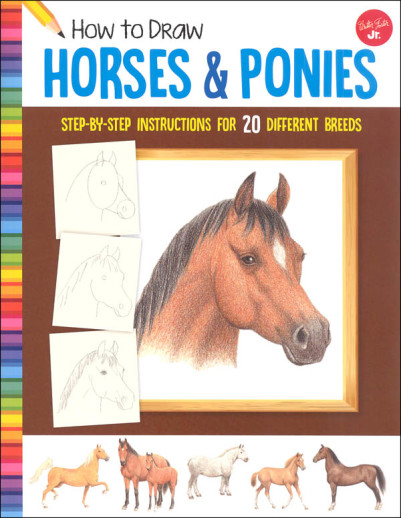We use cookies to make your experience better. To comply with the new e-Privacy directive, we need to ask for your consent to set the cookies. Learn more.
How to Draw Horses & Ponies: Step-by-Step Instructions for 20 Different Breeds
With How to Draw Horses & Ponies, young artists learn to bring these sweet and majestic animals to life, guided by realistic illustrations and step-by-step instructions for 20 different breeds.
Simple instructions make it fun and easy to draw lifelike horses and ponies. Each drawing lesson begins with a basic shape and progresses, step by step, to a finished piece of artwork, making it easy to follow along. Information about the breeds and fun facts provide inspiration and additional learning opportunities.
The breeds include:
Hanoverian foal
Pinto
Welsh Mountain Pony
Clydesdale
Arabian
American Saddlebred
Thoroughbred
Friesian
Shetland Pony
Andalusian
And more!
Just start with a few ovals, circles, and triangles and follow the illustrated steps--you'll be creating you own amazing masterpieces in no time at all!
By teaching little kids to notice basic shapes, they learn to build up from this foundation. For example, when they look at a cat, they notice a circle for the head, an oval for the body, triangular shapes for the ears – and then you build a tail, legs and feet as you round out the shapes. The same principle applies for dinosaurs, fish, and horses. Surprisingly, it works with machines and vehicles too! You are training the child's eye to look for basic shapes in the world around them. Instructions are in the book, but you will want some nice drawing paper for your own artwork. Maybe a blank journal would be fun to draw in as a keepsake of your early artwork! ~Sara
| Product Format: | Paperback |
|---|---|
| Brand: | Walter Foster Jr. |
| Author: | Russel Farrell |
| Grades: | 1-3 |
| ISBN: | 9781633227484 |
| Length in Inches: | 11 |
| Width in Inches: | 8.5 |
| Height in Inches: | 0.0625 |
| Weight in Pounds: | 0.25 |

